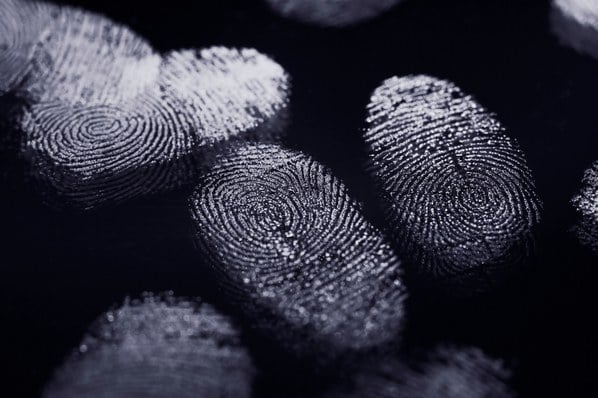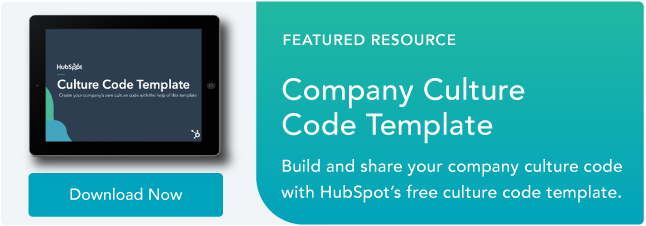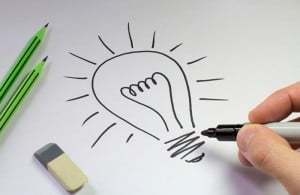People love stories. They appeal to our emotional side -- and when it comes time to make a decision (like, say, a buying decision), we tend to recall feelings and experiences more readily than we do facts and figures.

It's no secret customers feel a strong, shared identity with organizations that develop meaningful stories about their brands and businesses. Brand loyalty isn't created by a product or service; it's created by the ideas and stories told around a product or service.
But where does an organization come up with these ideas and stories? Where do they turn for the inspiration to create compelling stories that represent their brand and stand the test of time -- even when other parts of the business are inevitably changing?
For some companies, the answer could lie with cultural archetypes.
What Are Cultural Archetypes?
Many times, marketers will try to write copy, design visuals, or create a marketing campaign -- only to find that they can't get their team to agree on a look, a feel, or tone. Wouldn't it be nice to have a blueprint to turn to when creating marketing content?
That's just one example of how cultural archetypes can help build consensus on a team or in an organization.
Cultural archetypes are the recurring themes and patterns you find at your company. They're the fundamental, highly developed elements of the collective organization.
They help answer questions about your organization, such as: Who are we? What's most important to us? Why do we do what we do? And they can act as blueprints for the right words, imagery, and strategies you use in your marketing.
Archetypes can also help in a dialogue around harder questions, such as: Why are we like that? What are the cons to our archetype and identity, and how do we look out for, compensate, and plan for those?
They are the unwritten rules for how an organization operates, how employees get along with each other, and how they approach and deliver their work. These qualities are oftentimes hard to name. By looking at it from an archetypal standpoint, you can identify certain ways the people at your company behave, do the work, interact with customers, and interact with each other. With this model, you have a language for the behavior and beliefs of your organization.
Archetypes as a Framework
It would be very difficult to identify the recurring cultural patterns at your company without a framework, which is why the folks at Allegory Studios created an entire culture survey system called CultureTalk.
CultureTalk is an assessment tool that helps you measure what's going on in your company's culture, and it gives you an avenue for talking about it that can help build consensus.
Here's how it works: Employees at all levels of an organization take a survey that asks questions about their beliefs and attitudes about systems, structure, and behaviors at work. The tool evaluates these answers and identifies inherent cultural patterns.
These patterns are then aligned with one or more of the 12 cultural archetypes, which are based on those found in Carol Pearson's book, Awakening the Heroes Within: Twelve Archetypes to Help Us Find Ourselves and Transform Our World.
The 12 Cultural Archetypes
Here are descriptions and examples of the 12 cultural archetypes.

 Image Credit: Allegory Studios
Image Credit: Allegory Studios
1) Magician
Example: Walt Disney World
Visionary organizations that values synchronicity, serendipity, miracles, and mind over matter. They value transformational experiences and help others turn ideas into action.
2) Caregiver
Examples: Nordstrom, Volvo, Campbell Soup
Organizations that are compassionate, loyal, generous. Passion and purpose come from service, sacrifice, and putting others first. They are consistent, trustworthy, and offer great customer service. They may also be brands that help people take care of themselves.
Take the car company Volvo, for example. "They don't talk about how fast or zippy or sexy they are," Forstmann said. "They focus on how safe they are."
3) Hero
Examples: FedEx, Nike
Hero organizations are competent, courageous, and responsive, inspiring others to triumph over challenge. They're direct and hard-hitting; strong, bold, and functional.
4) Explorer
Example: Starbucks
Organizations that are explorers are independent, self-directed, and active. They're on-the-go and love learning through experiences, which they cultivate to stretch and grow. They understand there are no limits to becoming -- and no end to learning. They seek out a better world and the ability to align inner needs with outer realities. They're ahead of their time and often appeal to youthfulness.
5) Innocent
Examples: McDonald's, Coca-Cola
Innocent archetypes encourage us to get out of the fast lane and find happiness by returning to simple pleasures and basic values. They provide sanctuary, and they help us find or renew our faith. They tend to be optimistic and tranquil.
6) Jester
Example: Ben and Jerry's
Jester organizations are playful and spontaneous, and remind us to lighten up and live in the moment. They love bending the rules, which allows them to see things from a fresh perspective and engage in out-of-the-box thinking. Ben and Jerry's is an example of this archetype, which tends to match with brands that are playful and spontaneous. The names of its ice cream flavors match this playful vibe: Chunky Monkey, Boom Chocolatta!, Wayne'Swirled.
7) Revolutionary
Examples: Apple, Harley Davidson
Revolutionary archetypes do things radically differently -- on purpose. They bring an energetic willingness to weed through clutter and challenge the status quo. Their creative breakthroughs lead to real innovation and real growth.
8) Ruler
Examples: Budweiser, American Express
Ruler archetypes enjoy leadership roles and tend to act in a commanding, authoritative manner. They know how to get things done. Their image is well defined, solid, and polished.
9) Sage
Example: Harvard
Organizations that are sage are dedicated to uncovering the truth or spreading knowledge. They're thinking brands that take pride in intelligence and information. They tend to use thoughtful, sometimes challenging language. They look might be solid and grounded or historic and classic.
10) Creator
Examples: Martha Stewart, Crayola
Inherently non-conformist, creators are experts at seeing the big picture and rearranging pieces to craft meaning. Authenticity is important to organizations that are creators because they trust in the creative process and believe in imagination.
11) Lover
Examples: Hallmark, Godiva
Organizations characterized as lovers inherently understand the power of affection and emotions. They can be pleasure-seekers, and have an appreciation of real beauty and aesthetic value. Lovers are often found in cosmetics, jewelry, fashion, food, and travel.
12) Everyperson
Examples: Target, Cheers
The everyperson archetype represents the common man and woman. Think of the village green, democracy, or a comfortable group where everyone fits in. They're put off by elitism, and they tend to be authentic, honest, and hardworking.
(You can learn more about the archetypes here.)
How They Work In Organizations
Each archetype has positive attributes as well as negative attributes. Cynthia Forstmann, a partner at Allegory Studios, calls the negative attributes an archetype's "shadow side."
For example, while caregivers give great customer service and go out of their way to help people and deliver for others' needs, they can be martyrs and over-givers. While organizations that are creators are great at organizing ideas and making things beautiful, they also might be perfectionsts.
Knowing your organization's "shadow sides" can help you build on your positive attributes and manage for your negative ones. It can help you initiative dialogue around why your organization is like that. How can you compensate or plan for those negative attributes? What are the things that could happen because of them, and what should we be on the lookout for?
Meeting services company Unique Venues is a great example is one company that went through a culture audit. Their issue? They found themselves impulsively recreating their marketing year after year. The company's leaders realized they needed to redefine their brand at a foundational level.
When the employees at Unique Ventures took the CultureTalk survey, their collective responses yielded these two cultural archetypes: Everyperson and Explorer. There's a paradox here: The "everyperson" archetype is all about belonging, while the "explorer" is all about individiuality.
But they used that paradox to reinvent their brand story. Through discussion and analysis, here's what they uncovered:
- There was no common voice (everyperson) for the non-traditional niche of the meetings industry (explorer).
- Unique Venues’ staff are honest and hardworking (everyperson), and they innovate through cutting-edge technology (explorer).
- Member venues are united (everyperson) by their uniqueness (explorer).
- These venues are one-of-a kind (explorer), but not alone (everyperson).
- Meeting planners have access (everyperson) to high profile properties (explorer).
It culminated in a tagline that Unique Venues believes is at the heart of its brand: "You belong here."
Culture has become a hot topic because of technology, which has forced organizations to be much more transparent. Archetyping your organization can help you identify and build dialogue around your organization's vulnerabilities and keep you honest.
"You've gotta be who you are," Forstmann said. "Because the moment you're not, people know it -- and trust is broken."
Branding


![30 Famous Brand Names You're Probably Pronouncing Wrong [Infographic]](https://53.fs1.hubspotusercontent-na1.net/hubfs/53/pronounce-brand-name-wrong-infographic_2.webp)

![The 5 P's for Building a Powerful Brand [SlideShare]](https://53.fs1.hubspotusercontent-na1.net/hubfs/53/00-Blog_Thinkstock_Images/powerful-brand.png)


